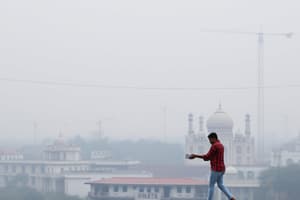Podcast
Questions and Answers
What was the main goal of the first Five-Year Plan in India?
What was the main goal of the first Five-Year Plan in India?
To attain a self-sufficient and balanced economy
What global forces influenced India's economic policies in the early years post-independence?
What global forces influenced India's economic policies in the early years post-independence?
Decolonization and Cold War dynamics
What legislation in 1973 led to a gradual increase in foreign direct investment (FDI) in India?
What legislation in 1973 led to a gradual increase in foreign direct investment (FDI) in India?
Foreign Exchange Regulation Act (FERA)
What were some of the challenges faced by independent India in its early decades?
What were some of the challenges faced by independent India in its early decades?
How did the Second Five-Year Plan (1956-61) impact agricultural production in India?
How did the Second Five-Year Plan (1956-61) impact agricultural production in India?
What were the key measures introduced to address poverty and promote equitable land distribution in post-independence India?
What were the key measures introduced to address poverty and promote equitable land distribution in post-independence India?
Who were the key figures associated with the policies of decentralization and rapid industrial growth in post-independence India?
Who were the key figures associated with the policies of decentralization and rapid industrial growth in post-independence India?
What was the main objective of the Industrial Policy Resolutions (IPRs) introduced in post-independence India?
What was the main objective of the Industrial Policy Resolutions (IPRs) introduced in post-independence India?
Name some of the sectors that saw the emergence of large public sector enterprises in post-independence India due to government initiatives.
Name some of the sectors that saw the emergence of large public sector enterprises in post-independence India due to government initiatives.
How did the policies like Tenancy Act and Agrarian Reforms contribute to reducing rural inequality in post-independence India?
How did the policies like Tenancy Act and Agrarian Reforms contribute to reducing rural inequality in post-independence India?
Flashcards are hidden until you start studying
Study Notes
Post-Independence Economic Transformation in India
The economic landscape of modern India has undergone remarkable transformations since it gained independence from British rule in August 1947. In this context, we'll delve into the key developments that shaped the Indian economy during its formative years following independence.
Poverty Alleviation and Land Reforms
Post-colonial leadership prioritized addressing poverty through land reforms—a crucial step towards ensuring equitable distribution of resources. Mahatma Gandhi’s vision of decentralization, combined with Jawaharlal Nehru’s desire for rapid industrial growth, led to the introduction of ambitious measures such as the Tenancy Act (1948–61) and Agrarian Reforms (1953–70). These policies aimed to reduce rural inequality by allocating more land to smaller farmers while also providing them legal protection against eviction.
Industrial Policy Resolutions
In order to foster self-reliance (Atmanirbhar) within the nation, successive governments introduced several Industrial Policy Resolutions (IPRs), starting with IPR (1956). This document encouraged heavy industries like steel, coal, railways, and defense manufacturing, which were deemed essential for national security and economic development. As a result of these initiatives, large public sector enterprises emerged in various sectors, including oil refining, aviation, space technology, telecommunications, and banking.
Five Year Plans
Often described as the blueprint for India’s economic progress, the first Five-Year Plan (FYP) began in April 1951, aiming to attain a self-sufficient and balanced economy in five stages over thirty years. By setting clear targets and guidelines across diverse sectors, the FYPs successfully catalyzed India’s transformation from a predominantly agrarian society to a dynamic mixed economy characterized by both private and state ownership. Notably, the Second FYP (1956–61) accelerated agricultural production, leading to significant increases in food grain output.
Socialist Outlook vs Market Realities
While most policy interventions focused on socialist ideologies, India gradually adapted to market realities amidst global forces such as decolonization and Cold War dynamics. For instance, the liberalizing effects of the trade agreement between India and the United States (US Trade & Aid Agreement, 1955–63) facilitated access to new markets and technological expertise. Similarly, foreign direct investment (FDI), though limited initially, increased gradually after the Foreign Exchange Regulation Act (FERA) was enacted in 1973.
Challenges and Opportunities
Despite notable achievements, the early decades of independent India witnessed enduring challenges related to high population growth, increasing income disparity, and periodic bouts of inflation, all culminating in the famine of 1965–67. However, the Green Revolution and subsequent White Revolution showcased how government intervention could positively impact agriculture and dairy productivity. Additionally, later eras brought forth opportunities in information technology, exports, free trade agreements, liberalization, privatization, and global integration – collectively shaping contemporary Indian economic prosperity.
Studying That Suits You
Use AI to generate personalized quizzes and flashcards to suit your learning preferences.




